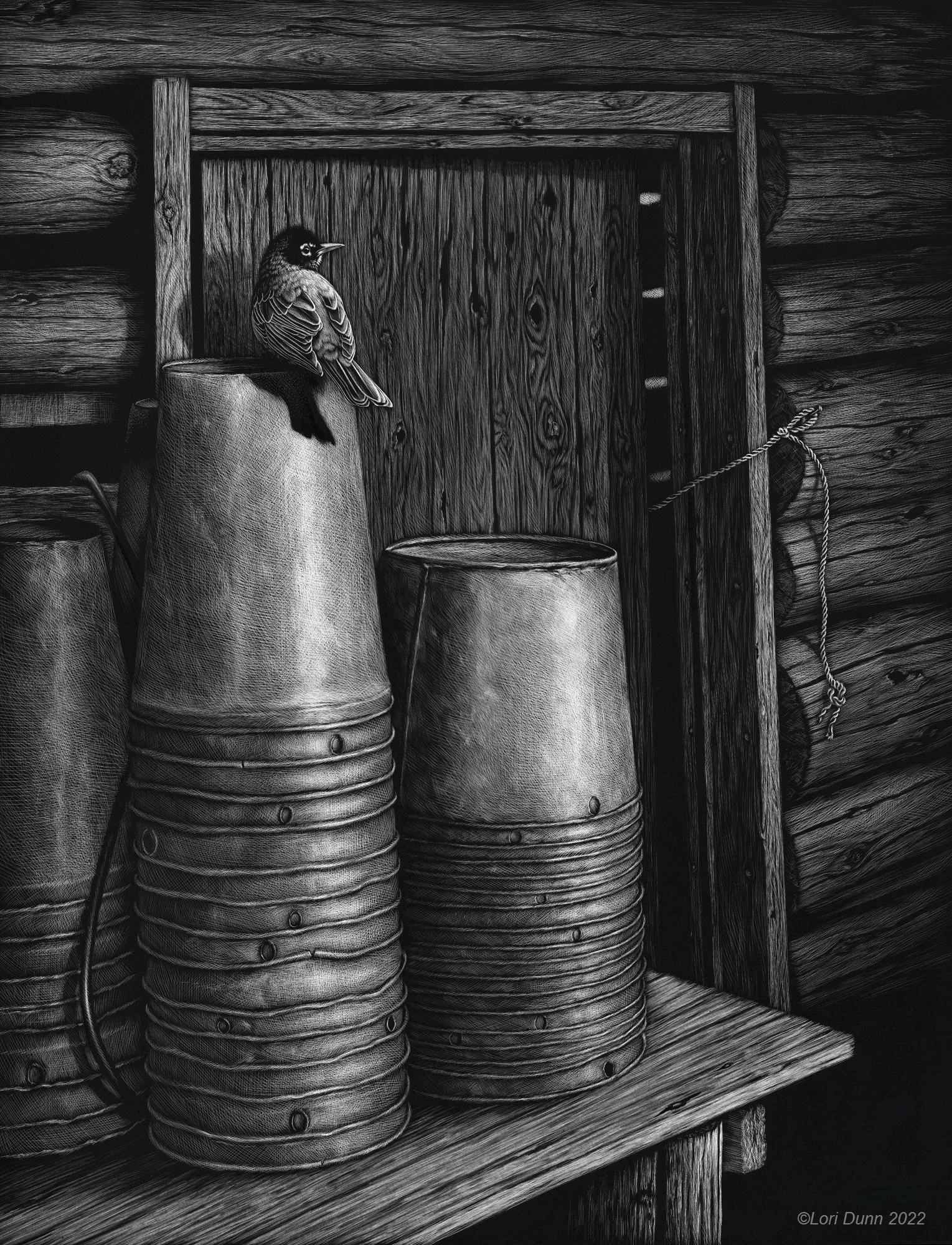LORI DUNN SCRATCHBOARD ART
promoting conservation through artistic efforts
Insert text here.
The Sugar Shack
18 x 14
SOLD
At winter’s end, when the first heat of the sun is felt, the sap in maple trees begins to flow and the annual tradition of maple syrup production begins. But it was early in the 16th century when Europeans first learned how to harvest maple sap (“sweet water”) from the Indigenous peoples of North America. Maple sap runs from the first spring thaw to mid March or April. At peak run, a sugar maple tree can produce about 2 gallons every 24 hours.
The creation of maple syrup from boiling down this sap is a tradition that connects many people to their ancestors, and to the land itself. Traditional maple syrup producers observed the phases of the moon, the direction of the wind, the water levels and the amount of snowfall during the winter. The behavior of the stars, plants and wild creatures was thought to influence the length of the sugaring season and the quality of the sap. Many homesteads built small shanties or cabins in the wooded areas of their property for the purpose of maple syrup production. Boiling sap was a long process!
Near Kinmount, Ontario, a family farm I have visited frequently has such a shack on the property. Many years have passed since any syrup was created, but the memories the family have of spending time here are happy ones. The log cabin remains, complete with sap buckets and hoses, telling a story of days gone by. I took some photos while I was here, thinking the buckets and door frame made a lovely composition. The only thing needed was the addition of one of the first birds we see in early spring, the American robin.
